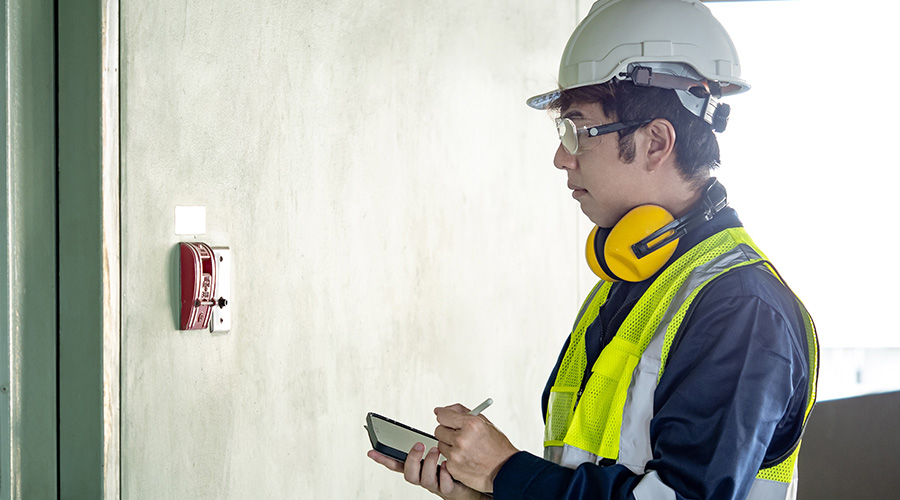Crisis Coordinators Play Role In Emergencies, Including Aiding Evacuation Of People With Disabilities
At Kennesaw State, each building has several crisis coordinators — a total of 265 across 35 buildings. While they fill many of the floor warden roles in emergencies, such as overseeing evacuations of areas or ensuring that people with disabilities are assisted, they can also initiate an evacuation on their own, says Lang, who oversees the university's emergency response program.
A recent example of this system in action came when a crisis coordinator called the emergency response center to report a smell of smoke. While she wasn't required to call the center before pulling the fire alarm, the smell didn't seem to match either an electrical or another sort of fire, such as burning paper, and she didn't see flames anywhere, so she called the emergency response team to ask their opinion. Ultimately, the building was evacuated, with four stories being cleared in less than six minutes.
The happy postscript is that the smell was identified as coming from a nearby dining hall that was starting up its grills for a parent orientation, with the odor getting into the evacuated building's HVAC system. But the cornerstone of the system is that Lang would much rather the crisis coordinators evacuate and have it be nothing than be too conservative in their decision-making.
"When they call in to me, it's not to ask permission, because we empower them to make that decision," says Lang.
In addition to initiating alarms or sweeping areas, one of the key responsibilities of whoever is in charge of overseeing an evacuation in a building is making sure that occupants with disabilities can get out. Most of the time, this is done by assigning someone or asking for volunteers to assist in an emergency. Then, when the occupant and their assistant have cleared the building, one of them reports to the floor warden or someone in a similar role so that the fire department knows that occupants with disabilities are out of the building.
However, there is one element of this that is often missed, says Chris Jelenewicz, senior program manager, Society of Fire Protection Engineers. A good emergency plan will account for those employees who have permanent disabilities; a better one will have a process for adding to the list employees who have temporary disabilities and will need assistance.
In a high-rise building, it's going to be very hard for someone with a broken leg to get out, he says. "You have to have a way in your plan to say, 'Hey, Chris broke his leg last week, let's get him on the list so we know to check for him and assist him in getting out.'"
Related Topics:
















